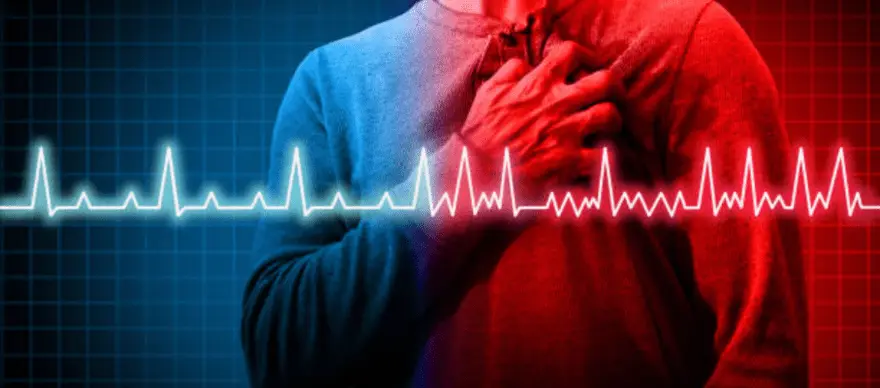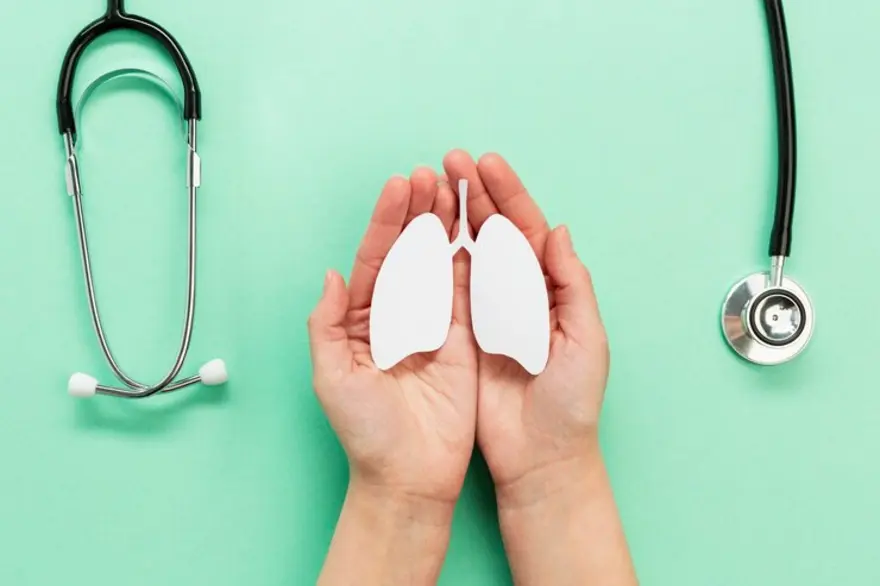Health Test
Heart Attack Testing- Are You at Risk?
4371 Views
0

A heart attack occurs when the heart does not receive adequate blood flow due to blockage in the blood vessels. Accumulation of fat, cholesterol, and other substances cause blockage. Plaque buildup in the artery is known as atherosclerosis. If this plaque ruptures, it can form clots that block the blood flow within the heart. Impaired blood flow destroys parts of the heart muscle and leads to a heart attack.
A heart attack is usually of two types: STEMI (ST-elevation-Myocardial Infarction) and Non-STEMI. A STEMI is associated with abnormality in the ECG wave in which the ST segment appears higher than in a normal ECG wave; it occurs due to complete blockade of blood supply to the heart for a prolonged time. A Non-STEMI heart attack usually occurs when the heart does not get required oxygen due to severe narrowing of arteries or transient occlusion.
Heart Attack causes and Risk Factors
Coronary artery disease is a leading cause of heart attack. Other reasons for heart attack are:
- Lack of oxygen in the blood
- Drug misuse
- Spasms within the blood vessels
- Tearing of blood vessels
The Risk Factors for Developing a Heart Attack are:
- Age
- Diet-related factors
- Obesity
- High cholesterol
- Smoking and alcohol consumption
- Stress
- Sleeping problems
- Diabetes, prediabetes
Heart Attack Symptoms
The common heart attack symptoms are:
- Chest pain, discomfort
- Nausea
- Shortness of breath
- Severe pain in the arm or shoulder
- Sweating
- Fatigue
- Lightheadedness
- Pain in the upper body and jaw.
- Difficulty breathing
What Happens During and After a Heart Attack?
- A heart attack lowers the blood and oxygen flow to the heart.
- Abnormal rhythms are developed in the heart.
- Some heart tissues can die due to the lack of blood and oxygen.
- It can weaken the heart, leading to heart failure.
- It can affect the functioning of the heart valves.
Heart Attack Diagnosis
Blood pressure, pulse are measured to assess the heart’s functioning and overall cardiac health. Following a heart attack, an electrocardiogram (ECG or EKG) is usually done to check for damage to the heart muscle. A doctor may also ask for a chest x-ray to see if the heart is enlarged or if there is fluid buildup around the lungs.
Let's understand this in detail:
- Electrocardiogram (ECG or EKG)
An ECG test measures the heart’s electrical activity. An ECG can find problems with the heart's muscles and valves, and monitor its rhythm. Sticky patches (electrodes) are placed on the chest, arms, and legs to record signals as waveforms, viewed on a screen or printed on paper.
Being the first heart attack diagnosis test, an ECG is a simple, painless test that takes just a few minutes. It helps diagnose heart conditions, such as a heart attack, congestive heart failure or an irregular heartbeat.
- Chest x-ray
A chest x-ray uses electromagnetic energy beams to produce images of the structures within the chest. It is generally safe and has very low radiation exposure. It is not recommended for pregnant women and young children as they are more sensitive to radiation effects.
- Blood tests
A blood test for heart attack diagnosis is often done to check for troponin, a protein released into the bloodstream when the heart is damaged. A doctor may ask for blood tests to check for enzymes released when heart muscle cells die.
Cardiac injury profiles are a group of blood tests that measure the levels of various components in blood that are usually affected during a heart attack. Troponin I and CK-MB being the tests of choice.
- Imaging Tests
These tests include a computed tomography (CT) scan, magnetic resonance imaging (MRI), echocardiogram and nuclear stress test.
- Echocardiogram
An echocardiogram (echo) test uses ultrasound waves to create images of your heart. A doctor can use the echo to evaluate the heart’s structure and functioning. It can also help diagnose problems with the heart’s muscles or valves.
- Non-STEMI heart attack diagnosis
Non-stemi heart attack diagnosis is made using blood tests, imaging tests and electrocardiograms. The blood test detects indicators of Non-STEMI, such as elevated creatine kinase-myocardial band (CK-MB), troponin, myoglobin, and lactate dehydrogenase (LDH).
Imaging tests such as an echocardiogram, cardiac MRI, computed tomography angiography (CTA) or coronary angiogram are done to look for artery blockages. An electrocardiogram may also be done to check for changes in the heart's electrical activity that can occur with Non-STEMI.
Getting a heart attack diagnosis is important if any symptom occurs, as early treatment can save your life.
Heart Attack Treatment
Heart attack treatment aims to correct the blood flow within the heart and restore oxygen levels in the blood. The following treatment methods can help a heart attack patient:
Medications
- Clot busters
- Blood thinning medicines
- Pain relievers
- Nitroglycerin
- Blood-pressure lowering medicines
- Cholesterol-lowering drugs
Surgical Procedures
- Coronary artery bypass surgery
- Coronary angioplasty and stenting
- Pacemaker
- Valve repair or replacement surgery
Cardiac Rehabilitation (rehab)
- Exercise and education programme to improve heart health after surgery.
Alternative Treatments
- Lifestyle modifications
- Heart-healthy diet
It is crucial to receive treatment for heart attack at the right time. The sooner you receive medical help after suffering a heart attack, the more successful your therapeutic outcomes are likely to be.
Complications
A heart attack can be life-threatening. It affects your heart health and its functioning in the long term.
Heart Attack Prevention
Your lifestyle, especially food and exercise, is your best weapon against heart disease and stroke. The following are some of the suggestions for a healthy heart:
- Quit Smoking and Alcohol
Smoking and alcohol consumption increases the risk factors for heart attack. Quitting smoking and alcohol is the best thing you can do for your heart.
- Eat a Healthy Diet
Eating a diet high in fruits, vegetables, whole grains, and low in saturated and trans fats can help reduce heart disease and stroke risk.
- Get Active
Just 30 minutes of moderate-intensity exercise can help reduce your risk of heart disease and stroke.
- Manage your Blood Pressure
If you have high blood pressure, working with your doctor to manage it can help reduce the risk of a heart attack.
- Manage your Cholesterol
If you have high cholesterol, taking steps to manage it can help reduce the risk of a heart attack.
- Manage your Diabetes
If you have diabetes, consult your doctor to manage your diabetes to reduce the risk of a heart attack.
- Reduce Stress
Effective stress management can help you reduce the risk of a heart attack.
- Know your Family History
A family history of heart diseases can impact your cardiac health. Knowing your family history is important for your doctor to best manage your health.
- Regular Checkups
Regular medical checkups can help identify health problems early when they are easier to treat.
Lipid profile assessment, cardiac risk assessment , diabetes risk profile are some tests that may be done as per the doctor’s recommendation.
Conclusion
Identifying and preventing the risk of a heart attack is essential. Your age, lifestyle, and pre-existing medical conditions determine your risk of suffering a heart attack. It would be best to seek preventive measures immediately to eliminate or minimise these risks.
 Home Visit
Home Visit Upload
Upload














1701259759.webp)









 WhatsApp
WhatsApp